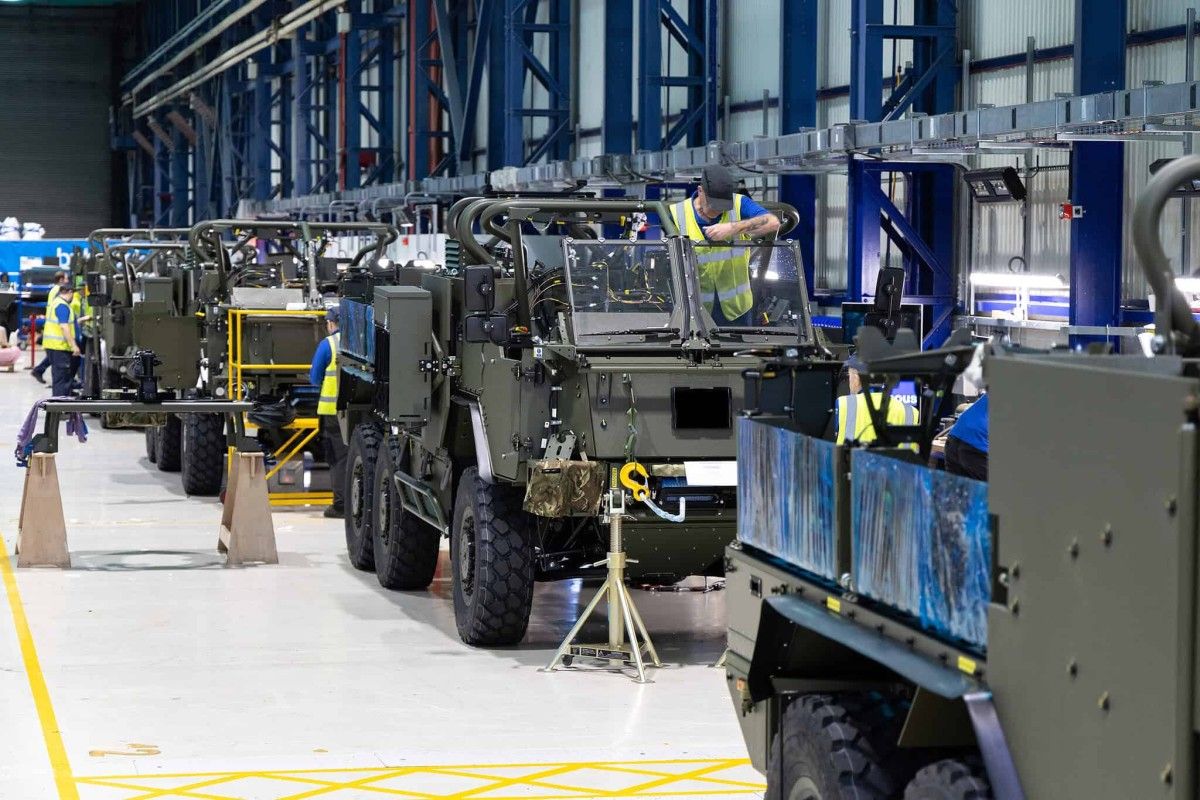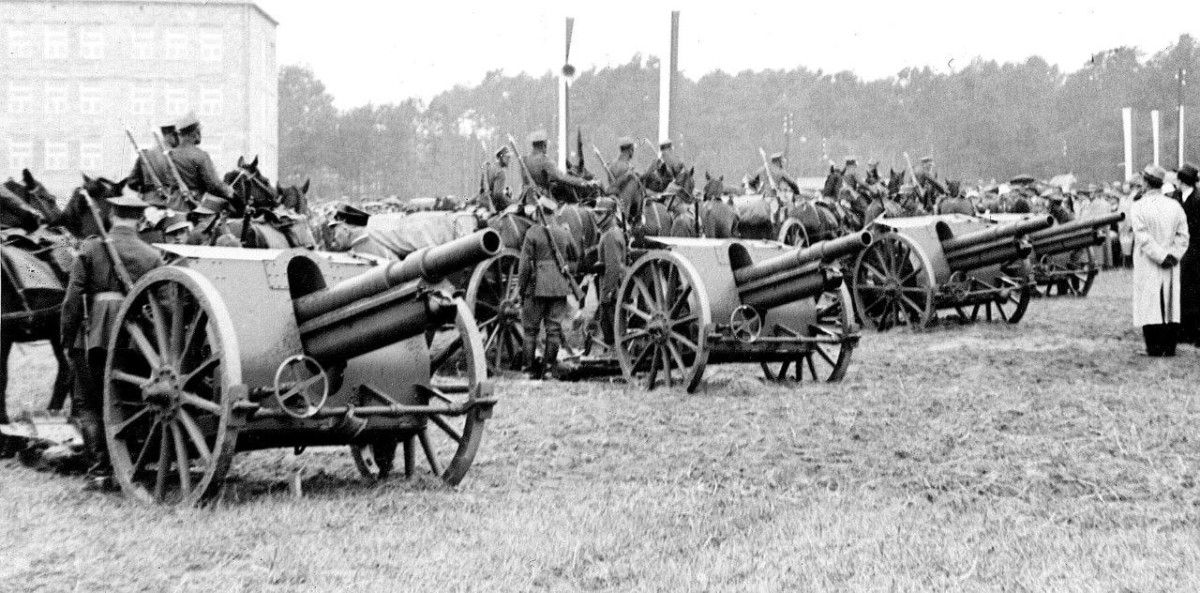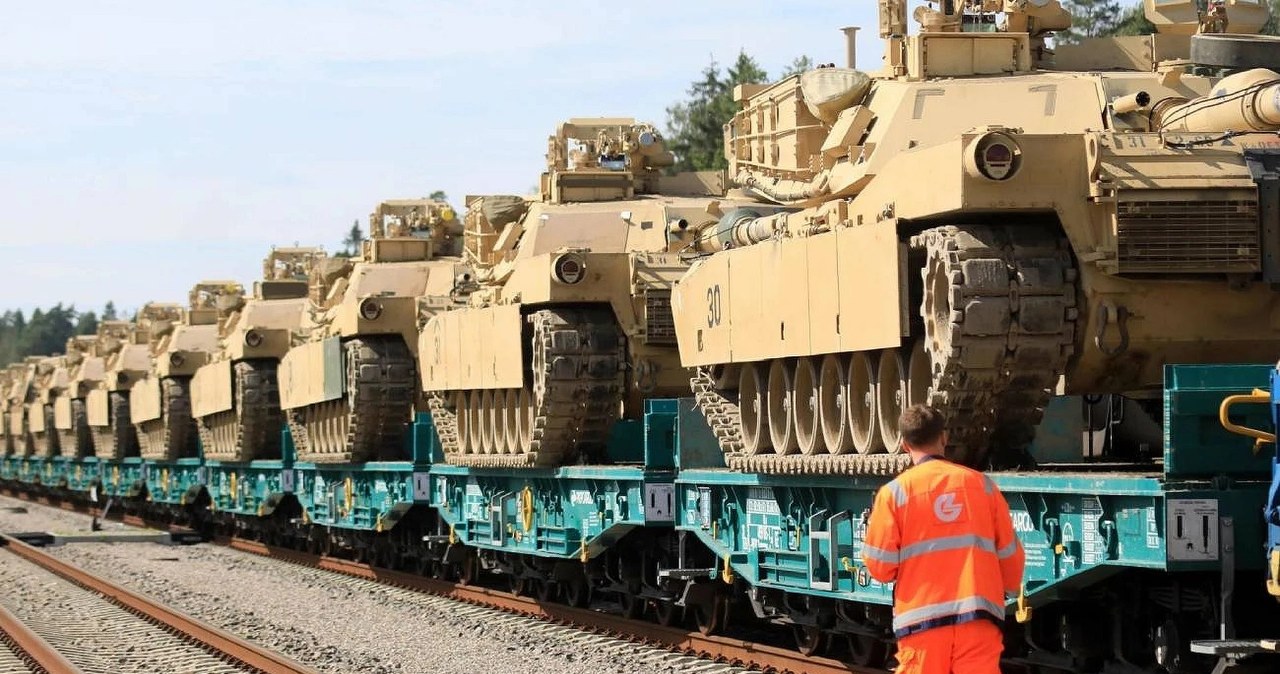Stopping an enemy attack, leading an assault, learning to operate Javelin launchers and mastering the principles of first aid on the battlefield – this is how Ukrainian soldiers prepare to operate on the front line within the EU mission. We had a rare opportunity to observe the training up close.

A little over twenty years old, painted nails, a helmet on her head and a rifle in her hands. She is strolling among soldiers camping on a forest clearing, chatting with them from time to time. Daria is a lieutenant and a deputy commander of a Ukrainian company. “A solid, reliable person,” says the commander himself and adds that women in the Ukrainian army are a common sight. There are several thousand of them on the front line alone.
Meanwhile, we enter the woods. We follow Polish instructors to see the way the camp has been secured. We go past successive masked positions, from which soldiers observe the nearby road and the paths winding among the trees. Owing to them, the soldiers in the clearing have a moment of peace to eat dinner, gather their thoughts, and prepare for the upcoming assault.
Company Attack
The Ukrainians are exercising at one of the training grounds in the west of Poland. The training itself has been organized by CAT-C (Combined Arms Training Command) – one of the two multinational commands of EUMAM UA (European Union Military Assistance Mission Ukraine), located in Żagań. “The mission was launched in October 2022. To date, we have trained over 13,000 troops in Poland alone,” says Maj Artur Pinkowski, spokesperson for CAT-C. The trainees include tank crew members, anti-aircraft troops, military engineers, mechanized infantry troops or battlefield medicine specialists. Some of them are novices, only learning the military craft, some are reservists, who need to recall some unpracticed knowledge and skills, others are combat-experienced soldiers who have come to the west of Poland to learn about procedures and equipment that are new to them. “We train specialists, but also entire formations up to battalion level. We align and coordinate teams, platoons, companies. We have instructors from almost 20 EU states, who cooperate with Ukrainian army instructors,” explains Maj Pinkowski.
We have come to the training ground to watch the training of a mechanized battalion made up of freshly recruited soldiers. It is one of the companies of this battalion that is currently stationed on the mentioned forest clearing. Yesterday, we saw the company troops in action for the first time. We were observing the open space and the trenches from a hill, when the quiet of the afternoon was broken by the roar of engines. Infantry fighting vehicles emerged from the nearby forest and parked in positions only several hundred meters away from us. Troops flooded out of the vehicles and froze in anticipation. When the commander gave them a signal, the air filled with shells. Gunners from the IFVs fired at wrecks standing in the distance, and infantry troops at automatically raised targets. Everything was supervised by the company commander who controlled fire from his command vehicle. He decided on the spot who was to shoot at a particular moment in order to most effectively shell the enemy positions. Several dozen minutes later, the troops were relieved by their fellows from another company.

“Today we are testing how individual subunits perform in defense,” explains an officer, a CAT-C instructor (at the request of CAT-C we do not give names). “We already trained this element before, only without using live ammunition. Instead, we gave other tasks to the companies. For example, the troops, on the way to their positions, would fall into a an ambush prepared by the enemy and had to get out of it. We would also place dummy IEDs along the march route,” enumerates the officer. That is how, step by step, the Ukrainians proceeded to real firing practice.
According to the scenario, the troops managed to stop the enemy attack. Now it is time to lead a counterattack, and that is what the troops gathered in the clearing are currently preparing for. “We are in the staging area. Before the company goes into battle, its commander must inspect the state of the vehicles, check that all soldiers have weapons with sufficient amount of ammunition and how they execute particular orders, make sure that the means of communication are in working order. Simply put, he must examine and attend to a whole lot of details that may prove to be crucial in battle,” emphasizes the instructor.
Several minutes later, the IFVs standing in the shade of the trees start their engines and turn around one by one in order to form a column. The soldiers get inside them and the vehicles move slowly up a hill along a forest road. Soon, they will begin the assault. We go into open space, but at that point, all we can see are clouds of dust raised by the tracks. “We don’t have much time, so we are trying to make the most of it,” says one of the instructors.
Grey Dots
I sit down on a chair, put my arms on the table and look through my binoculars. On the table next to mine there is a row of tiny figurines. I know that they represent Russian tanks, missile launchers, armored carriers. Similar figurines are standing in front of me, each with a detailed description. I am trying to name the ones I can see through my binoculars, but it is not that easy. For me, they are just grey dots, but the soldiers must be able to handle this problem. “For a Javelin system operator, quick identification of the target is essential,” emphasizes another CAT-C instructor, who is training the soldiers in operating the American anti-tank launchers. “First and foremost, the soldiers have to be certain they are firing at an enemy vehicle. Then, they should correctly assess the value of such target, as every missile costs quite a lot of money. It is probably not worth wasting it on a truck. However, using it against a tank, which can certainly inflict a lot of damage on us, is fully justified,” adds the soldier.

The Ukrainians are training vehicle identification using a new, yet extremely simple idea. The mentioned figurines replicate Russian equipment at the scale of 1:285. The tables are 5 meters apart. The binoculars have been adjusted in a way that translates this distance into 1,300 meters in the field. Thus, even though we are sitting under a roof, the situation has a considerable dose of realism in it.
Meanwhile, we move on. At the other end of the room, future Javelin operators are training on simulators. A bright object is moving across a monitor, which is standing on an elevated platform. “Can you see the tank?” the instructor asks a soldier sitting on the floor, with a large tube resting on his shoulder. “Ok, now easy does it.” The soldier slowly moves the tube to the right, and then upwards. A bright rectangle moves across the screen, and catches up with the silhouette of the vehicle. “Now!” shouts the instructor, and the soldier pulls the trigger. Unfortunately, he misses. He misses the second hit as well. Only the third attempt is successful.
The Ukrainians also train shooting outside. We see three soldiers with their faces pressed against rectangular boxes with a lens. These boxes are CLUs (Command Launch Units), which allow soldiers to conduct reconnaissance, assess distance to target, take a closer look at its particular elements. Having done that, they attach the box to the launcher, and fire the missile. Of course, the whole procedure can be carried out without demounting the CLU, but the launcher requires some heavy lifting. The whole thing weighs 23.5 kilos. Therefore, if soldiers have enough time, they can use the procedure like the one observed and thus not strain their shoulders. “Javelin is easy to operate, but at the same time very effective. The optical instruments allow it to recognize the target at a distance of 2.5 km, and its operators can be trained within several days,” points out the instructor.

Ukrainian troops are learning not only tactics and operating weapons. Before they go into battle, they also have to master the basics of medical rescue. We are now going to see this type of training, conducted by instructors delegated by the Czech army. Ukrainian soldiers in full gear – backpacks, rifles, helmets, vests – are standing in a small yard in the shade of the trees. The NCO conducting the class is walking around. When he shouts out a signal word, the trainees fall to the ground and turn over onto their backs. Each of them must instantly reach for a tourniquet, put it around their thigh and tighten it. This is the first rule of survival before help arrives. Another soldier can assist you, but they need to know how. Now, the instructor selects a volunteer, places him on the ground and shows how to stop bleeding from an artery using an ordinary bandage. So he moves from simple things to more complicated ones.
The battalion training has been spread over several weeks. When we reach the training ground, it is almost finished. Several more days and the Ukrainians will go back to their country and continue training there.
Structures from Scratch
According to original assumptions, EUMAM was to last until 2024. However, its mandate will most likely soon be extended by another two years. “From the very beginning, the mission required enormous organizational effort, but I think today we can call it a success,” says Col Robert Woźniak, CAT-C deputy commander. Instructors have trained a total of 46,000 Ukrainian soldiers within EUMAM. Almost 25% of them have trained on Polish training grounds. “In a short period of time, we had to create an entirely new, multinational structure from scratch. At the headquarters in Żagań, apart from Poles, we have 21 foreigners. Almost 500 specialists from other countries have been working together with our instructors, and this entire mechanism works smoothly and efficiently,” emphasizes Col Woźniak. CAT-C promptly responds to the needs expressed by the Ukrainians. “We must adjust the training to the changing situation on the front, and this is certainly a huge challenge,” points out the officer. What about the Ukrainians? “We get the soldiers that the Ukrainian side is able to send to us. Their level of training varies, but we can certainly say that they are very engaged and committed. It is evident that they simply want to train and learn. They know that the results achieved during training will be later verified in combat,” summarizes Col Woźniak.






![F-35 z Księcia Walii na straży Wschodniej Flanki NATO [RELACJA]](https://cdn.defence24.pl/2025/12/27/1200xpx/62kM3YmNc0YOlVhtYwg5tJbHtGXuupQfVYZO4sdm.ln6a.jpg)








